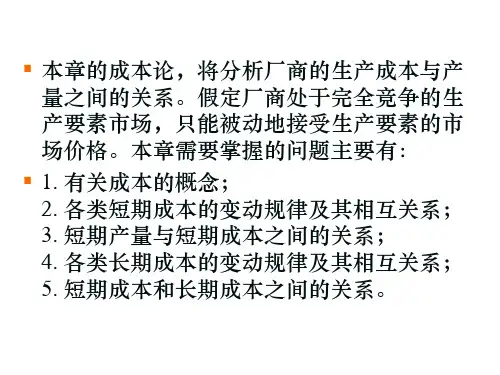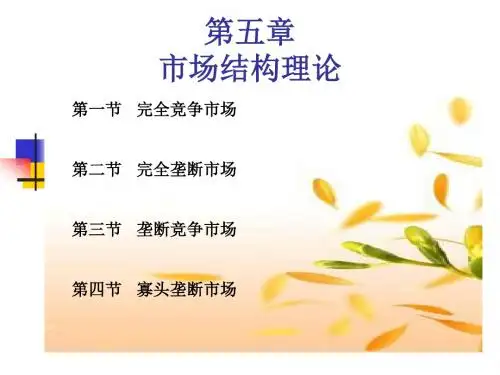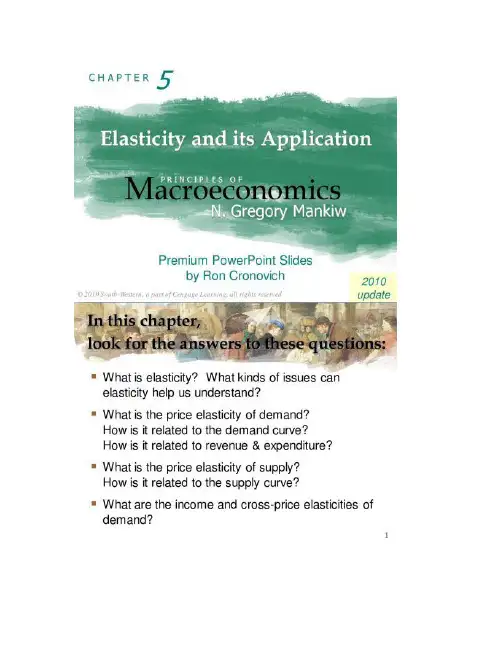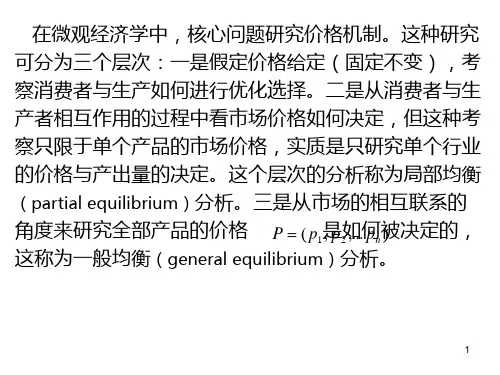微观经济学第五章PPT课件
- 格式:pptx
- 大小:188.77 KB
- 文档页数:11





Other Elasticities Cross-price elasticity of demand: measures the response of demand for one good to changes in the price of another good Cross-price elast. = of demand % change in price of good 2 For substitutes, cross-price elasticity > 0 (e.g., an increase in price of beef causes an increase in demand for chicken For complements, cross-price elasticity < 0 (e.g., an increase in price of computers causes decrease in demand for software ELASTICITY AND ITS APPLICATION 45 % change in Qd for good 1CHAPTER SUMMARY Elasticity measures the responsiveness of Qd or Qs to one of its determinants. Price elasticity of demand equals percentage change in Qd divided by percentage change in P. When it’s less than one, demand is “inelastic.” When greater than one, demand is “elastic.” When demand is inelastic, total revenue rises when price rises. When demand is elastic, total revenue falls when price rises. 46CHAPTER SUMMARY Demand is less elastic in the short run, for necessities, for broadly defined goods, or for goods with few close substitutes. Price elasticity of supplyequals percentage change in Qs divided by percentage change in P. When it’s less than one, supply is “inelastic.” When greater than one, supply is “elastic.” Price elasticity of supply is greater in the long run than in the short run. 47CHAPTER SUMMARY The income elasticity of demand measures how much quantity demanded responds to changes in buyers’ incomes. The cross-price elasticity of demand measures how much demand for one good responds to changes in the price of another good. 48。


